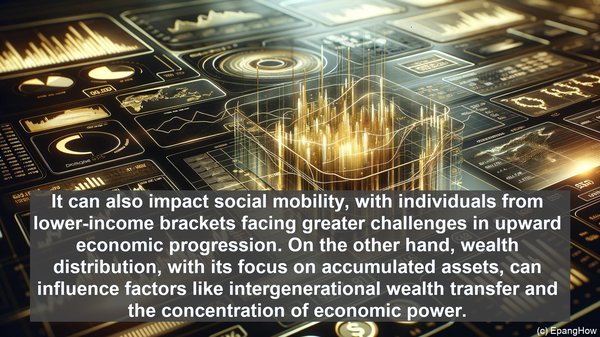Introduction: The Dual Dimensions of Economic Analysis
Hello everyone! When it comes to analyzing the socioeconomic landscape, two key dimensions often take center stage: income distribution and wealth distribution. While these terms might seem similar at first, they actually represent distinct aspects of economic inequality. Today, we’ll explore the nuances of both, shedding light on their definitions, implications, and the crucial differences between them.

Income Distribution: A Measure of Earnings
Let’s start with income distribution. Essentially, this concept refers to the way in which a nation’s total income is divided among its population. It provides insights into the earning potential and financial well-being of individuals or households. Income distribution is often represented through various statistical measures, such as the Gini coefficient, which quantifies the level of inequality within a given society.
Wealth Distribution: A Measure of Accumulated Assets
Moving on to wealth distribution, this metric focuses on the distribution of accumulated assets within a population. Wealth encompasses not just income but also other forms of financial resources, such as property, investments, and savings. While income can fluctuate over time, wealth is a more enduring measure of an individual or household’s economic standing. Similar to income distribution, wealth distribution can also be analyzed using statistical tools, revealing the concentration or dispersion of wealth within a society.
Key Distinctions: Income vs Wealth
Now, let’s delve into the key differences between income distribution and wealth distribution. Firstly, while income is typically earned through employment or other sources, wealth can be acquired through a variety of means, including inheritance or investment returns. Additionally, income is often seen as a flow, representing the resources available within a specific time period, whereas wealth is more akin to a stock, representing the accumulated assets over a longer duration. Furthermore, income distribution tends to be more dynamic, influenced by factors such as economic cycles or policy changes, while wealth distribution is often more stable, reflecting the historical accumulation of assets.
Implications and Significance
Both income distribution and wealth distribution have significant implications for a society. Unequal income distribution can lead to disparities in access to resources, opportunities, and even basic necessities. It can also impact social mobility, with individuals from lower-income brackets facing greater challenges in upward economic progression. On the other hand, wealth distribution, with its focus on accumulated assets, can influence factors like intergenerational wealth transfer and the concentration of economic power. Understanding these distributions is crucial for policymakers, economists, and anyone interested in analyzing the socioeconomic fabric of a nation.

